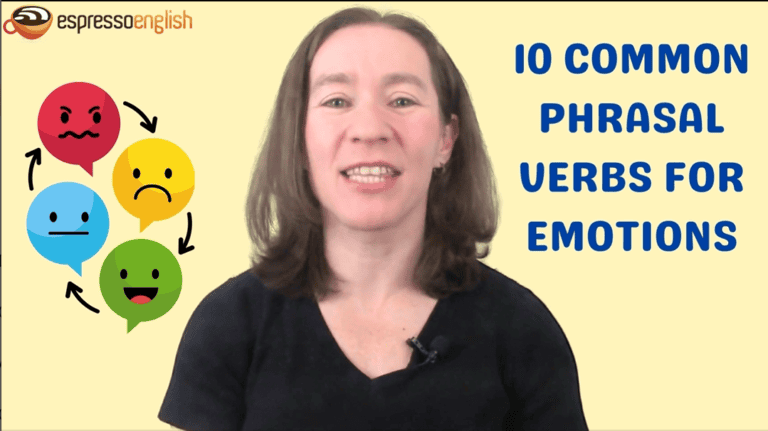
Phrasal Verbs in Conversation Course
Do we say “I want to talk with you or talk to you”? Many English learners ask me about talking with vs. talking to someone – is there any difference?
Difference between TALK TO and TALK WITH
There’s essentially NO difference between talk to and talk with when two people are having a conversation, and both of them are speaking. You can say “Sue is talking to John” or “Sue is talking with John” – they’re the same!
Some people claim that talk to should be used when it’s only one person speaking, and talk with should be used when it’s more of a two-sided discussion.
However, in practice, many native speakers use both interchangeably. Here are some examples.
- Can I talk to you for a minute?
= Can I talk with you for a minute? - Brian’s over there, talking to Matt.
= Brian’s over there, talking with Matt. - I talked to my boss and she said I could take a day off.
= I talked with my boss and she said I could take a day off.
Talk to or Talk too?
Some English learners wonder whether to use talk to or talk too someone. The correct phrase is talk to someone, never “talk too someone.”
The only time we could possibly use “talk too” is at the end of a sentence, where “too” means “also” or “in addition”:
- She just kept going on and on, not noticing that I wanted to talk, too. (=I also wanted to talk)
- My professor will be presenting at the conference. I’ll be giving a talk, too. (= I will also be giving a speech/lecture)
Talk + prepositions (with examples)
Here are some other examples of talk + preposition:
talk about + (topic/person)
This is the most common way to express speaking about a topic. The topic can be serious or not so serious.
- We talked about our favorite movies.
- Everyone’s talking about the World Cup.
- They always talk about me behind my back.
(behind my back = when I’m not present/listening)
talk over / talk through + (problem/issue)
We use talk over and talk through to describe a more detailed, in-depth discussion, often when there’s a decision to be made, or a problem or conflict that needs to be resolved. Talk through can also be used for explanation of a process step by step.
- I’m not about to buy a car on a whim. I need to talk it over with my wife first.
(on a whim = on impulse, spontaneously) - My business partner and I talked things over and came up with a plan.
(came up with = created/invented) - If you’re not happy in the relationship, you should talk it through with your boyfriend.
(= discuss a problem in depth) - The IT guy talked us through the installation of the new computer program.
(= explain a process)
talk someone into / talk someone out of
+ doing something
To talk someone into doing something means to convince that person to do it. He/she didn’t want to do it, but you managed to change their mind.
- I was hesitant to try ice skating, but Helen talked me into going.
- Let’s see if we can talk Pete into giving us free food.
- I can’t believe the salesman talked you into buying a $7,000 sound system.
The opposite is to talk someone out of doing something – meaning to convince the person NOT to do it:
- I was going to buy an iPhone, but Fred talked me out of it by telling me all the ways that Samsung phones are better.
- He wants to get a giant tattoo, and his wife is trying to talk him out of it.
- I’m glad my friend talked me out of quitting school when I was about to give up.
Now you know that talk to and talk with are essentially the same… as well as many other “talking” phrases! Try to use talk to, talk with, and the other phrases in your own example sentences.










